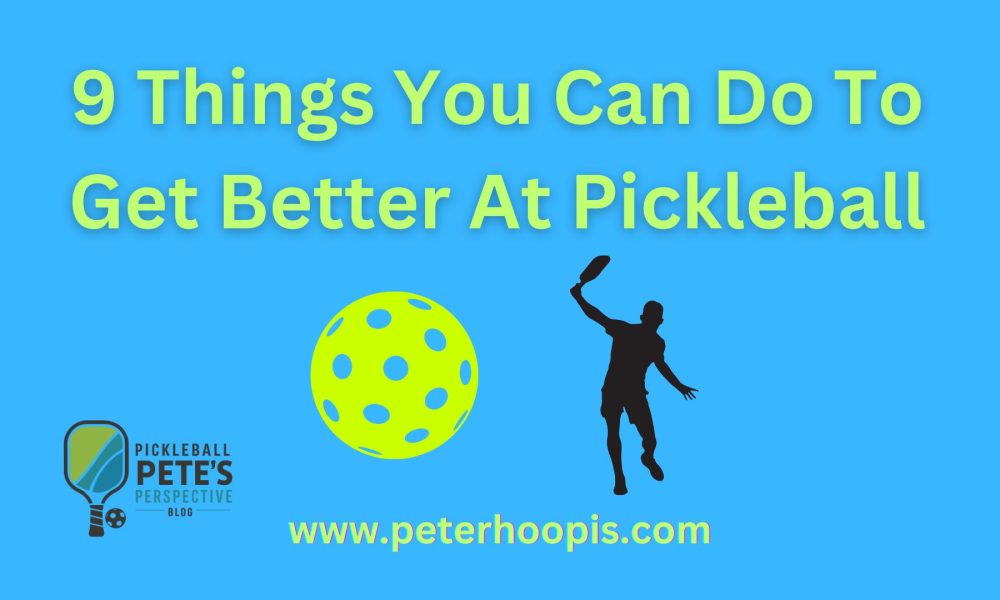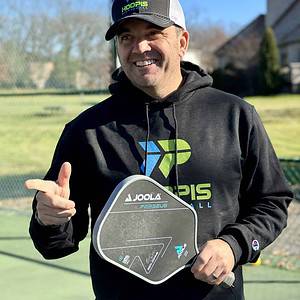Hey pickleball friends!
Can I be honest with you for a minute?
Sometimes it feels like your pickleball game is just STUCK, right? Like you’re putting in the hours but not seeing the results you want.
Trust me, I’ve been there. You show up to the pickleball court all excited to play pickleball, thinking “Today’s the day my game clicks!” Then BAM – you’re still popping up those third shot drops, missing easy dinks, and wondering if you’ll ever get better at pickleball.
The struggle is real, especially when you see other players improving faster than you. Maybe you’re thinking you need expensive private lessons or one of those fancy new paddles everyone’s talking about.
Well, I’ve got some good news – you can absolutely get better at pickleball without spending a fortune on fancy pickleball machines or private lessons. In fact, some of the best improvements come from focusing on the basics and making small tweaks to what you’re already doing.
I’ve put together some game-changing tips to improve your pickleball game that have helped me and countless other players break through those frustrating plateaus. These are practical, proven strategies you can start using TODAY to see real improvement in your pickleball game.
The best part? You don’t need anything special to get started.
Just bring your current pickleball paddle, a positive attitude, and a willingness to learn.
Ready to transform your game?
1. Perfect Your Dink Shot
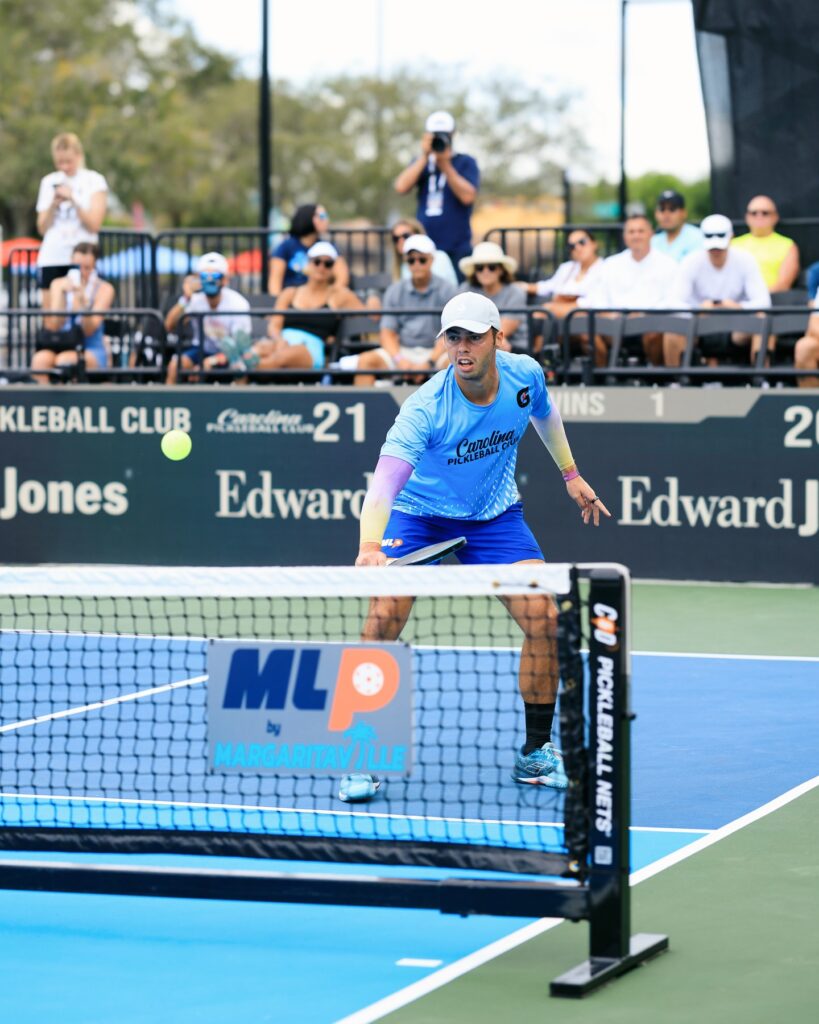
Okay, I know what you’re thinking – “Dinking? Really? That’s so boring!”
But here’s the thing: those sweet, gentle dinks are literally the foundation of a killer pickleball game. Think of them as your secret weapon! When you can consistently drop that ball juuuust over the net, you’ll start winning points like crazy.
Let’s be real – we all love those powerful slams and dramatic drives. They look awesome, they feel amazing, and honestly? They’re super fun!
But watch any pro match and you’ll notice something interesting: the longest rallies and most strategic points? They’re won in the kitchen with precise dinking.
Here’s why dinking matters so much:
It keeps you in control of the point
It forces your opponents to hit up (giving you attacking opportunities to increase your high percentage shots)
It tires out aggressive players who want to slam everything
It shows you’re patient enough to wait for the right moment to strike
Think of dinking like playing chess – each shot is setting up your next move. When you’re good at dinking, you’re not just hitting the ball back and forth. You’re creating angles, testing your opponent’s weaknesses, and waiting for that perfect moment to strike.
Quick challenge for you: Next time you’re warming up, try playing dink-only pickleball with your partner for 5 minutes straight. Warning: it’s way harder than it sounds! 😅
Want to level up your dink game even more? Here are my favorite drills:
The Figure 8: Practice dinking crosscourt and down the line, making a figure 8 pattern
The Reset Challenge: Have your partner hit medium-pace shots at you, and focus on resetting them into soft dinks
The Kitchen Dance: Practice dinking while taking small steps side to side – this helps you stay balanced and ready
Remember: A good dink is like a good joke – it’s all about the timing! Keep that ball low, soft, and controlled. Your game will thank you for it. For more pickleball tips, check out our comprehensive guide.
If you’re struggling with consistency, try this mental trick – imagine you’re dinking the ball into a box that’s just 6 inches over the net. This visualization helps keep those dinks low and controlled!
2. Master the Serve

Let’s talk serves. You don’t need some fancy spin serve to dominate – you just need to be consistent and smart about it.
Here’s something most beginners don’t realize: a simple serve that lands deep and low will win you more points than a complicated serve that only works half the time. It’s not about power or fancy spin – it’s about placement and consistency.
Think about it – what makes you groan when you’re receiving serve?
It’s probably not the crazy topspin serve that goes into the net 50% of the time. It’s that annoying serve that lands right at your feet, forcing you to hit up instead of attacking.
Let’s break down what makes a killer serve:
Depth is Your Friend
Aim for the back 3 feet of the court
Make your opponents take that extra step backward
A deep serve = less attack opportunities for them
Keep it Low
The lower your serve, the harder it is to attack
Imagine throwing darts – level and straight
High serves are basically setting up your opponents for a slam
Mix Up Your Placements
Sometimes right at the body (super uncomfortable!)
Sometimes wide (makes them move)
Sometimes straight down the middle (creates confusion in doubles)
Quick Tips for Better Serves:
Keep your toss consistent – same height every time
Follow through toward your target
Start simple and add variety once you’re consistent
Here’s my favorite practice routine: Put some targets (water bottles work great) in the back corners of the service box. Try to hit each target 5 times. Once you can do that consistently, start working on your speed and spin.
Remember: You only get one serve in pickleball – make it count! A good server isn’t trying to ace every point. They’re trying to start the point with an advantage. Sometimes that means a gentle serve that lands awkwardly for your opponent.
Watch your opponents’ feet during warmup. If they’re standing way back, serve short. If they’re creeping in, go deep. Make them adjust to you, not the other way around!
3. Improve Your Ready Position

Get Ready (No, Really Ready)
You know that moment between points when your paddle’s hanging down by your knees? Yeah, that’s killing your game!
I see it at the courts every single day – players with amazing skills but one terrible habit: that lazy paddle position between shots. By the time you lift that paddle from your knees to block a fast shot, the ball’s already whizzing past you! Proper ready position is crucial for effective shot selection, as it allows you to quickly respond with optimal shots in various game situations. You might think it’s no big deal, but proper ready position is like your pickleball foundation. Build it right, and everything else gets easier!
The Perfect Ready Position Checklist:
Paddle up at chest height (seriously, no lower!)
Knees slightly bent (think athletic stance)
Weight on the balls of your feet (not those heels!)
Eyes forward, scanning the court
Body relaxed but alert
Here’s why it matters so much: By the time you lift that paddle from your knees to block a fast shot, the ball’s already whizzing past you! In pickleball, every split second counts. When your paddle’s already up, you’re cutting your reaction time in half.
Think Like a Ninja: I tell my playing partners to imagine they’re a ninja in a movie scene – always ready to react, never caught off guard. Would a ninja let their sword drop between moves? Nope! So don’t let that paddle drop either.
Common Ready Position Mistakes:
Standing flat-footed (you can’t move quickly from your heels!)
Paddle too low or pointing down
Locked knees (hello, slow movement!)
Standing too straight (get low for better balance)
Tense shoulders (stay relaxed but ready)
Quick Fix Drill: Between EVERY point, do this quick check:
Bounce on your toes twice
Bring paddle to chest height
Take one deep breath
Scan the court
Now you’re ready!
Remember: The best players look relaxed but ready. They’re not tense, but they’re never caught off guard either. Make this your natural stance, and watch how many more shots you’ll return successfully!
Film yourself playing for 5 minutes. You’ll be amazed (or horrified!) at how often your paddle drops or your stance gets lazy. Sometimes seeing it is the best way to fix it.
4. Practice the Third Shot Drop
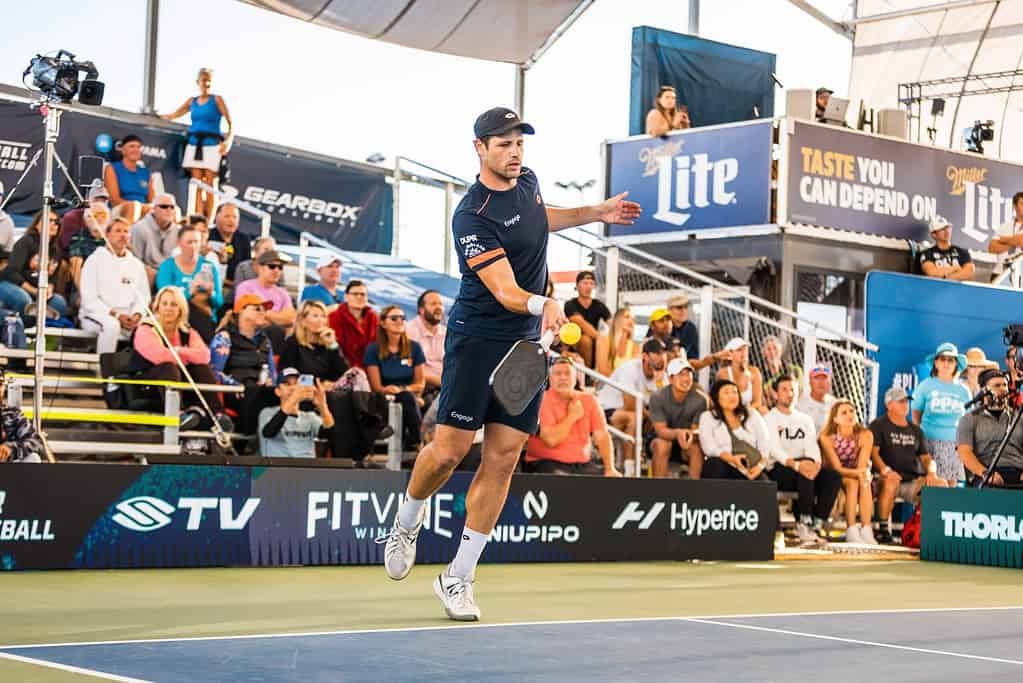
Let’s be real for a minute – the third shot drop is where games are won and lost. It’s that magical shot that takes you from being stuck at the baseline to controlling the net. And yes, it’s probably the trickiest shot to master in pickleball!
Here’s the scene: You’ve got a great serve, they return it, and now… you’re standing at the baseline with a decision to make. Drive it hard? Lob it? Nope – this is where the third shot drop becomes your best friend.
Why The Third Shot Drop Matters:
Gets you safely to the net (where points are won!)
Prevents your opponents from attacking
Shows you’re not just another “bang it hard” player
Creates better positioning for your whole team
The Secret Sauce: Think of it like landing a paper airplane – it’s all about the soft touch and the right arc. You want that ball to:
Clear the net (but not by much)
Land softly in the kitchen
Stay LOW after the bounce
Give you time to move forward
Common Third Shot Drop Mistakes:
Hitting it too hard (we’re not playing tennis!)
Too much topspin (makes it bounce too high)
Standing still after the shot (gotta move up!)
Panicking and driving it instead
Not getting enough arc on the ball
Practice Makes Perfect: Here’s my favorite drill progression:
Start at the kitchen line (just practice the soft touch)
Move back a few feet (add some arc)
Keep moving back until you’re at the baseline
Now add movement forward after each shot
Finally, practice with serve and return
Remember This: Every amazing third shot drop you see started as a hundred failed attempts in practice. Don’t get discouraged if it takes time. Keep at it, stay patient, and celebrate the small wins!
Use visual targets in the kitchen when practicing. Water bottles work great – try to get your drops to land between them. Once you can do that consistently, you’re golden!
Bonus Tip: If your third shot drop isn’t working in a game, don’t keep forcing it. Mix in some drives or lobs until you get your confidence back. Then try again when the pressure’s off.
Develop Pickleball Court Awareness
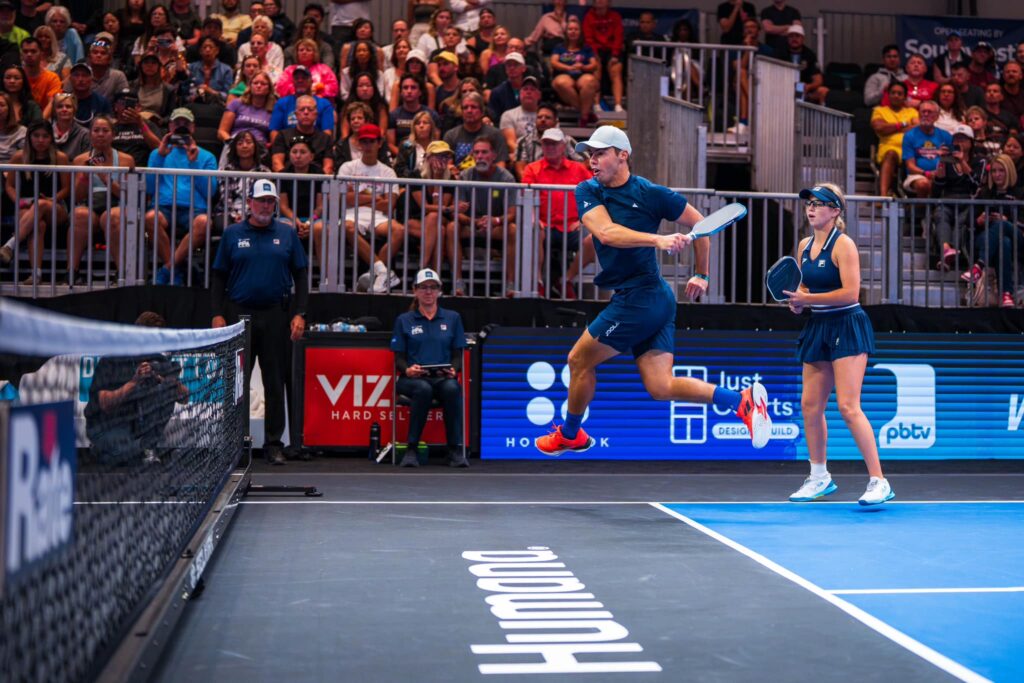
Be the Court Ninja.
Let’s talk about that mysterious “sixth sense” some players seem to have – you know, those people who always know where everyone is and where the ball’s going next. That’s court awareness, my friends, and it’s like having a pickleball superpower!
The good news? It’s not something you’re born with – it’s something you can develop. And once you do, it’s like playing a whole new game. Learning pickleball through expert tips and strategic insights can significantly enhance your court awareness.
Why Court Awareness is Your Secret Weapon:
You’ll predict shots before they happen
You’ll know where to position yourself
You’ll stop getting caught out of position
You’ll make your partner’s life way easier
You’ll start controlling points instead of reacting
The Mental Game: Start treating the court like a chess board. Ask yourself:
Where are my opponents standing?
Which player looks more comfortable at the net?
Who’s got a stronger backhand?
Is anyone creeping forward?
Where are the gaps in their defense?
Develop Your Radar: Here’s how to build that court awareness:
Between every point, take a quick “snapshot” of where everyone is
Watch your opponents’ feet (they tell you where they’re going before they move!)
Notice which shots make your opponents uncomfortable
Pay attention to your partner’s position (are you leaving gaps?)
Look for patterns in how your opponents return serves
Communication is Key:
Call “Switch!” when crossing with your partner
Say “Mine!” for balls between you
Use simple signals before serves
Let your partner know if you’re staying back
Call out “Bounce!” when letting it drop
Quick Awareness Drill: Try this during warmup – close your eyes for 2 seconds, then open them and immediately point to where everyone is on the court. It’s harder than you think!
Remember: Good court awareness means less running, better positioning, and smarter shots. It’s not about being faster – it’s about being smarter!
Watch pro matches online, but don’t watch the ball – watch how the players move and position themselves. You’ll start seeing patterns you can use in your own game.
6. Work on Non-Dominant Hand Skills
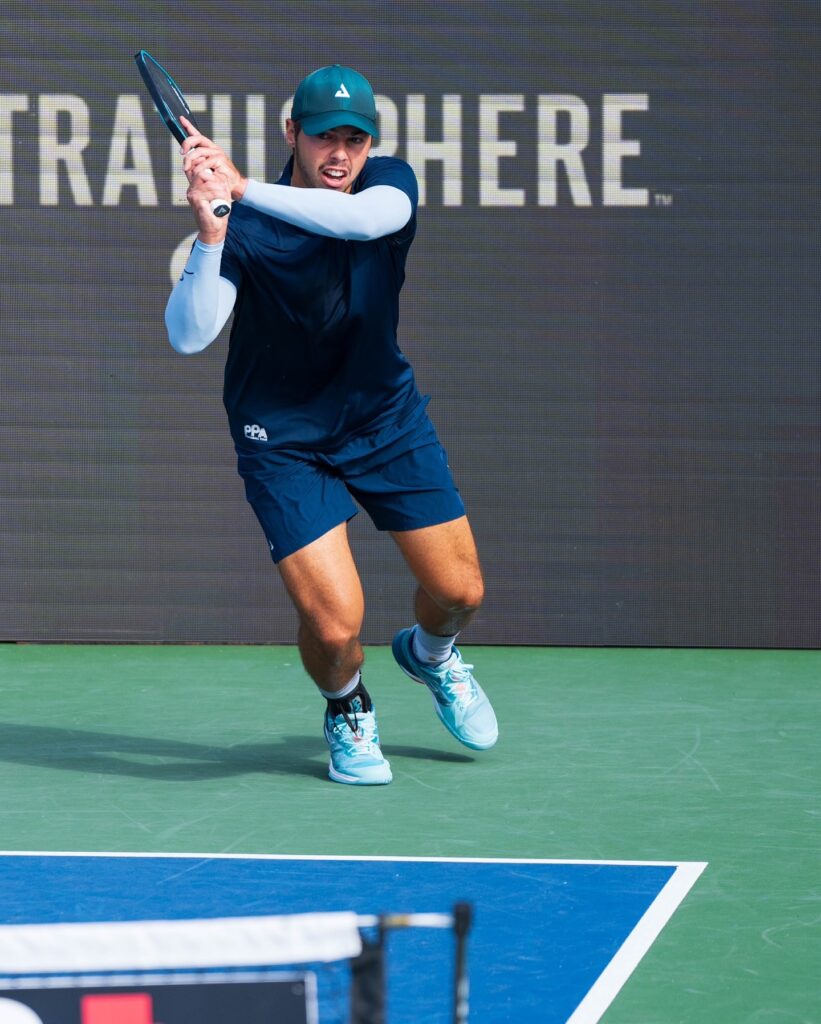
Love Your “Other” Hand.
Let’s get real about backhands for a minute. Most of us treat our backhand like that one awkward relative at family gatherings – we know it exists, but we’d rather avoid it if possible! 😅
But here’s the brutal truth: if you’re running around your backhand or only hitting forehands, you’re basically wearing a big sign that says “HIT IT TO MY BACKHAND!” And guess what? Your opponents will happily oblige!
Why Your Backhand Matters:
Doubles your coverage of the court
Makes you less predictable
Gives you better court positioning
Stops opponents from exploiting your weak side
Opens up new angles for attacks
The Mental Game: First things first – stop thinking of your backhand as your “weak” side. Start thinking of it as your “growing” side. It’s not worse, it’s just newer! This mindset shift makes a huge difference.
Building Backhand Confidence: Start with these simple steps:
Practice backhand dinks (they’re easier than you think!)
Master the backhand block return
Work on backhand drives
Learn to volley with your backhand
Practice serving with your backhand (yes, really!)
The Ultimate Backhand Challenge: I call this the “Lefty Day Challenge” – spend an entire practice session using ONLY your backhand. Yes, it’ll feel weird. Yes, you might lose some points. But watch how quickly your comfort level improves!
Quick Tips for Better Backhands:
Turn those shoulders (don’t just arm it)
Keep your elbow in close
Follow through toward your target
Stay relaxed – tension kills good technique
Use that non-dominant hand for balance
Practice Drills:
Wall rallies using only backhands
Crosscourt backhand dinking with a partner
Backhand-to-backhand games
Drop shot practice from the baseline
Rapid-fire backhand volleys
Remember: Every great player you admire started with an awkward backhand. The difference? They worked on it instead of avoiding it!
Film yourself hitting backhands in slow motion. You’ll be surprised how different it looks from how it feels. This feedback is gold for improving your technique!
7. Enhance Your Physical Fitness
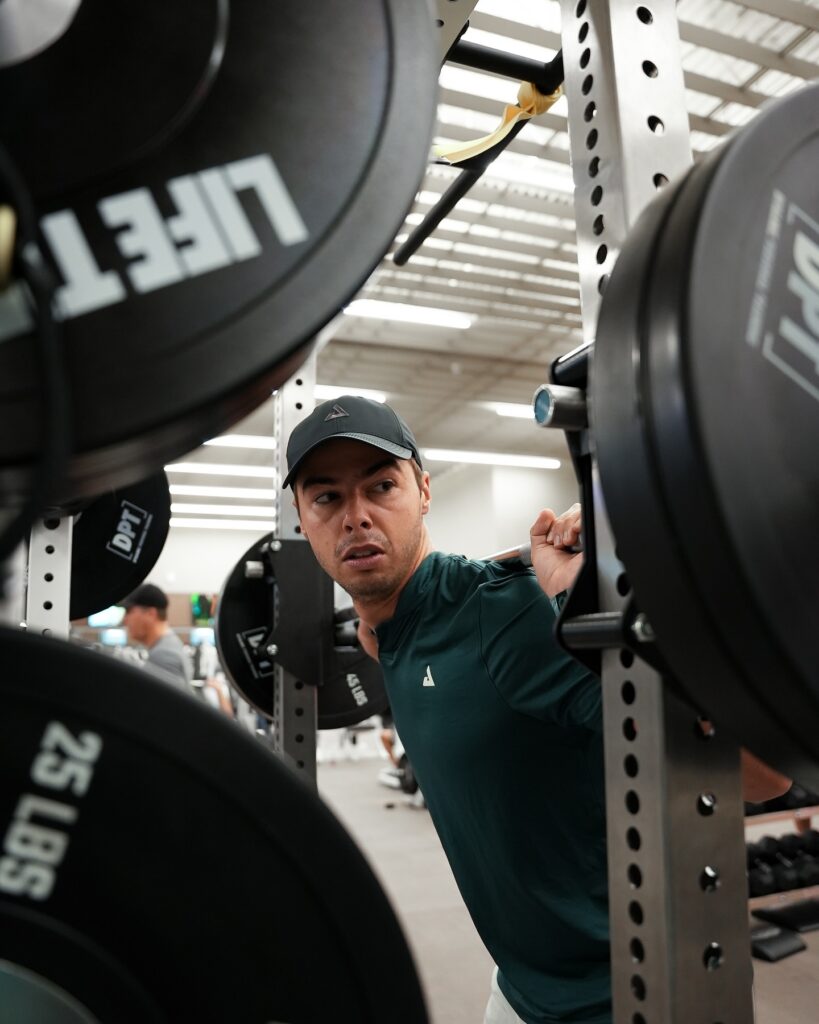
Listen, I know “fitness” isn’t everyone’s favorite word. But here’s the thing – pickleball might look chill from the sidelines, but we all know those intense points that leave you gasping for air! 🥵
The good news? You don’t need to become a gym rat or train like an Olympic athlete. Just a few simple tweaks to your fitness routine can make a HUGE difference in your game.
Why Pickleball Fitness Matters:
Longer, stronger play without getting tired
Quicker reactions at the net
Better recovery between points
Fewer injuries (your knees will thank you!)
More confidence in those long tournaments
The Pickleball Player’s Fitness Focus:
Agility (those quick direction changes)
Core strength (hello, stable dinking!)
Balance (no more awkward stumbles)
Endurance (for those epic kitchen battles)
Flexibility (reach those wide shots!)
Quick Fitness Wins: Start with these simple exercises:
Side-to-side shuffles (just like on the court!)
Forward/backward sprints (10-15 feet)
Planks (great for core stability)
Squats (power up those legs)
Stretching (especially those shoulders!)
The 5-Minute Pre-Game Warmup: Try this quick routine before playing:
20 side shuffles each direction
10 forward/back movements
10 arm circles (both directions)
10 knee lifts each leg
10 ankle rotations each foot
Off-Court Training Tips:
Take the stairs instead of the elevator
Do squats while watching TV
Practice balance while brushing teeth
Short walks between games
Quick stretches during breaks
Injury Prevention 101:
Always warm up (seriously, ALWAYS)
Stay hydrated (before you’re thirsty)
Listen to your body (rest when needed)
Proper shoes (no running shoes!)
Cool down stretches after playing
Remember: Fitness isn’t about becoming a super-athlete. It’s about playing the game you love, longer and stronger, with less risk of injury. Even small improvements make a big difference!
Keep a resistance band in your paddle bag. They’re great for quick warmups and between-game stretches!
8. Master Your Grip and Stance
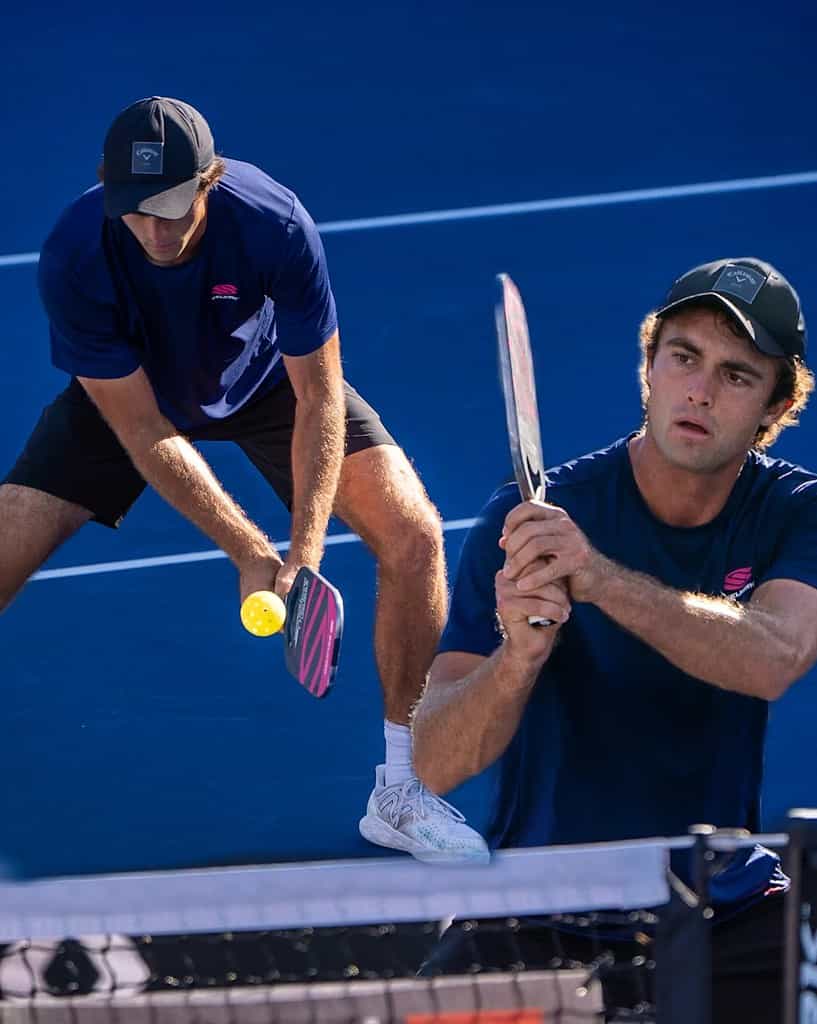
Let’s talk about the foundation of your pickleball game – your grip and stance. These might seem like small details, but they can make a HUGE difference in your performance on the court. A solid grip and stance give you the power, control, and accuracy you need to hit those winning shots and gain a competitive edge.
Why Grip and Stance Matter:
Think of your grip and stance as the roots of a tree. Without strong roots, the tree can’t stand tall and weather the storm. Similarly, without a consistent grip and stance, your pickleball game can’t reach its full potential. A good grip and stance help you maintain balance and stability, allowing you to move quickly and efficiently around the court.
Tips for a Solid Foundation:
Grip: Hold your pickleball paddle with a firm but not overly tight grip. Imagine you’re holding a tube of toothpaste – firm enough to keep it in your hand, but not so tight that you squeeze out the paste. Experiment with different grip pressures to find what works best for you. A loose grip can cause the paddle to slip, while a too-tight grip can restrict your wrist movement.
Stance: Stand with your feet shoulder-width apart, with your body facing the net. Keep your knees slightly bent and your weight evenly distributed between both feet. This stance allows you to move quickly and easily in any direction. Think of it as your ready position – always prepared to react to whatever comes your way.
Contact Point: Pay attention to the contact point between your paddle and the ball. Aim to make contact with the ball at the center of the paddle, using a smooth and controlled motion. This will help you hit shots with more precision and consistency.
Practice: Practice your grip and stance regularly to develop muscle memory and consistency. Start with slow shots and gradually increase your speed and power as you become more comfortable. The more you practice, the more natural it will feel.
If you’re struggling with your grip, try this: hold your paddle with your non-dominant hand and practice hitting shots. This will help you develop a more balanced grip and improve your overall control.
9. Keep Your Eye on the Ball
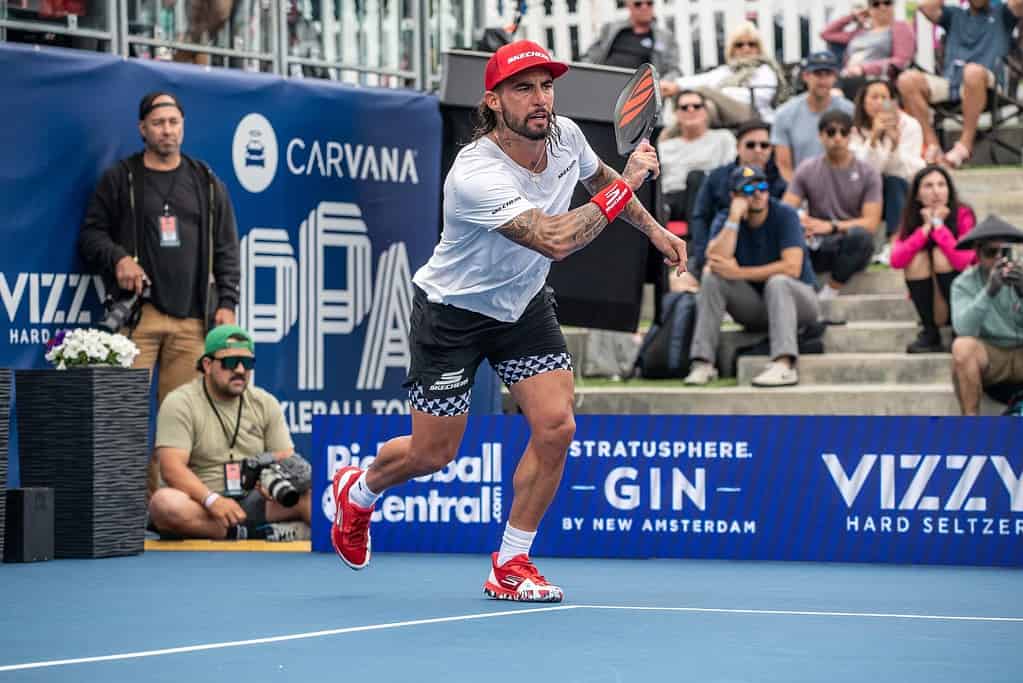
Alright, let’s dive into one of the most crucial aspects of pickleball – keeping your eye on the ball. It sounds simple, but maintaining focus on the ball can be a game-changer. It’s all about tracking the ball’s movement and staying aware of your surroundings to make those perfect shots.
Techniques for Better Focus:
Focus on the Ball: Keep your eyes locked on the ball at all times. Track its movement and trajectory from the moment it leaves your opponent’s paddle to when it reaches you. Avoid distractions and stay laser-focused on the ball.
Watch the Ball’s Bounce: Pay close attention to how the ball bounces on the court. Notice its speed, spin, and direction. This will help you anticipate its movement and make more accurate shots. The more you observe, the better you’ll get at predicting where the ball will go.
Use Your Peripheral Vision: While keeping your eyes on the ball, use your peripheral vision to stay aware of your surroundings. This includes your opponent’s position and the court layout. It’s like having a built-in radar that helps you make smarter decisions on the fly.
Practice Under Pressure: Practice your focus and concentration under game-like conditions, such as during drills or scrimmages. This will help you develop the mental toughness and focus needed to perform well under pressure. The more you practice, the more natural it will become.
Here’s a fun drill to improve your focus: play a game of “shadow pickleball” with a partner. One of you hits an imaginary ball while the other tracks its movement and reacts as if it were real. It’s a great way to sharpen your focus and anticipation skills!
By mastering your grip and stance, and keeping your eye on the ball, you can improve your overall pickleball technique and gain a competitive edge. Remember to practice regularly and stay focused on your goals to achieve success in your pickleball journey.
Ready to Level Up Your Pickleball Game?
Whew! That was a lot of info, right?
But here’s the beautiful thing about pickleball – you don’t have to master everything at once. This isn’t a race, it’s a journey. And trust me, it’s a super fun one! 🏓
Start Small, Win Big: Pick ONE thing from this list that resonates with you.
Maybe it’s finally facing that backhand fear. Or perhaps you’re ready to become a dinking machine. Whatever it is, focus on that for a week or two before adding something else.
Remember:
Every pro was once a beginner
Every amazing player started exactly where you are
Every killer shot started as a missed shot in practice
Every win is built on a foundation of learning from losses
The Secret Sauce to Improvement: You know what makes pickleball so special? The community! Don’t be afraid to:
Ask better players for tips (most of us LOVE to help!)
Share what you’re learning with others
Celebrate small improvements
Learn from your mistakes (we all make them!)
Keep showing up, even when progress feels slow
What’s Next? Take these tips, get out on the court, and START. Don’t wait for the perfect moment or until you feel “ready.” The best time to improve is right now!
See you on the courts! 🏓
P.S. Don’t forget to share this with your pickleball buddies. We’re all in this together, and sharing is caring in the pickleball world!

